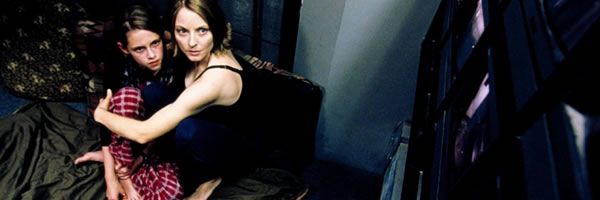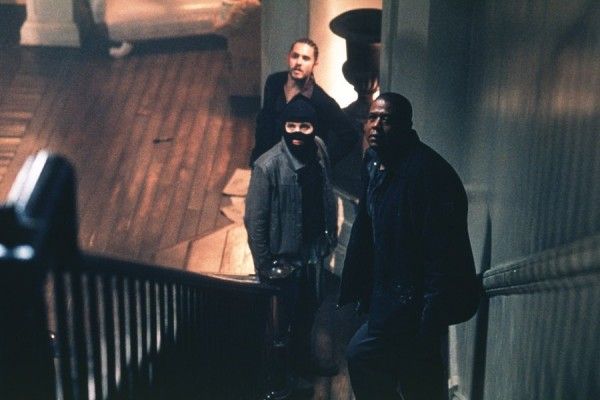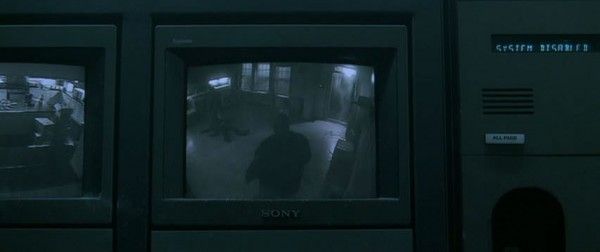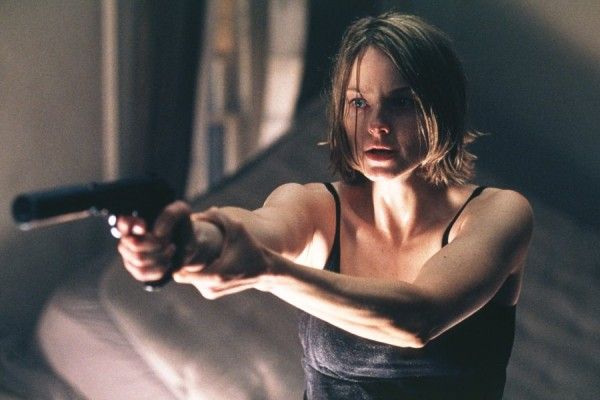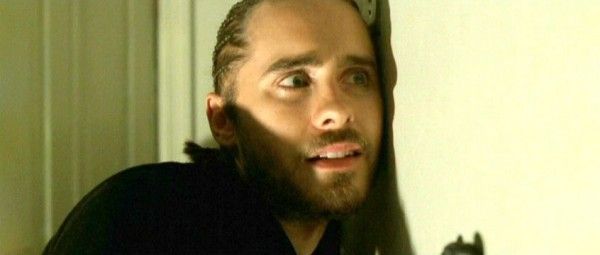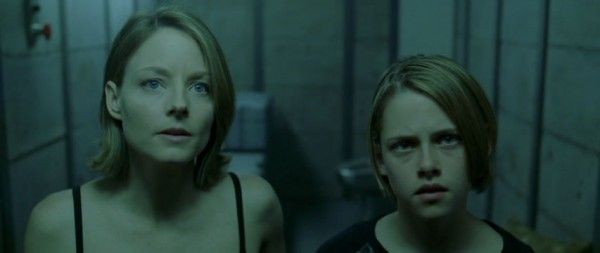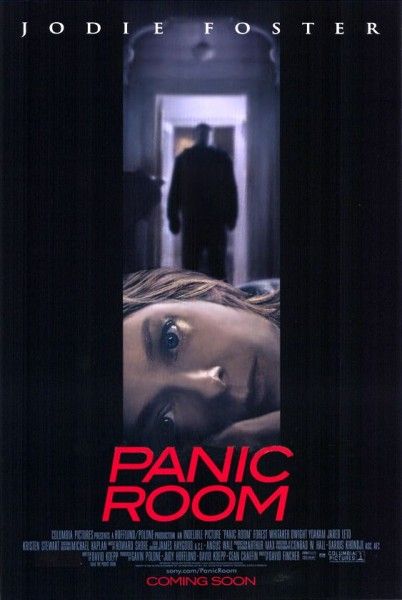[With Mindhunter set to premiere next week, we’re reposting our deep dives into the work of director David Fincher. These articles contain spoilers.]
Although my evidence is purely anecdotal, I've found Panic Room to be the red-headed stepchild of Fincher's filmography. Its biggest sin seems to be its lack of thematic or narrative ambition, which is unfair because A) it's a faulty appraisal of what the film is trying to achieve; and B) it dismisses the film's technical mastery, and how the picture overcame a slew of unexpected problems. If Alien 3 was an onslaught of insurmountable odds caused by studio meddling, Panic Room met unforeseen challenges and rose to the occasion every time to create what was, as intended, "a Friday night date movie."
Panic Room was actually a savvy follow-up to Fight Club in the sense that Panic Room is a breather. Rather than try to top the sturm und drang of his previous movie, Fincher went restrained, or at least as restrained as David Fincher can be when it comes to telling his stories. Panic Room is, if broken down to its bare elements, a rather fascinating paradox albeit not a thematically rewarding one since the story is simply a woman and her daughter trying to fend off three home invaders.
It's tempting to push a 9/11 metaphor onto the story—the safety of the home has been shattered by intruders. Unfortunately, that doesn't hold up since Panic Room was in production well before September 11th, and while people can still see the movie as a metaphor, the film was never made with that intention. It was made because, to quote Fincher from the commentary track, "I have not made one of these. I haven't made a 'date' movie. That would be a cool thing to do…"
The movie is very cool both from a technical and emotional perspective. From the outset Meg Altman (Jodie Foster) and her daughter Sarah (Kristen Stewart) are dwarfed by their surroundings. Meg might be looking to buy the house (partly as an act of revenge against her cheating ex-husband), but the house is the true master, especially the way Fincher moves the camera. The house is a big, empty space and while the characters may be fighting over control of the panic room, there's a calm, detached air to the cinematography. Part of that is Fincher's style, and part of that is his direction perfectly suiting the environment he created.
As he explains on the commentary track, one of the reasons he took the job is, in addition to the B-movie allure, he didn't want to spend the entire day watching trucks load and unload like he had on Fight Club. He wanted to shoot an entire movie in an enclosed space and have it down to a tee. The house was built like a puzzle that could be pulled apart and put back together with relatively low difficulty in order to get the necessary shots. Additionally, Fincher pre-visualized the movie on a computer as much as possible. The planning was superb.
So naturally, it all went to hell. Nicole Kidman was originally set to play Meg, and if you look at the special features on the Special Edition DVD, you can even see some brief footage of her in the role. But the physical requirements of the role were too much for an injury Kidman sustained during filming on Moulin Rouge, so Foster was brought in at the last minute. And late into production, Foster got pregnant, so that's why she's wearing a sweater near the end. Finally, there are just the rigors of filming, and it's the little things like knocking out a piece of ceiling and then spending an entire day to constantly replace that ceiling for a shot that takes about two minutes tops. To this day, Panic Room remains Fincher's longest shoot.
To know about the amount of effort that went into making this B-movie is interesting, but I believe Panic Room has a lot to offer on its own merits. The technical craftsmanship is what's key to the film's success because the house has dual functions. It's a prison and a fortress. It provides the illusion of safety. It's a broken family facing a break-in. These conflicts permeate the home beyond a simple B-movie even though that's the genre where this movie lives and breathes.
The characters are broadly drawn, but specific enough to be captivating. Meg and Sarah feel like they have a lived-in relationship where the little details are what matter most. It's Meg giving Sarah a little bit more soda when Sarah harshly criticizes her father. It's Meg shouting at the invaders "Get out of my house!" over the PA, and Sarah saying, "add 'you fuck!'" There's Burnham's (Forest Whitaker) sad reluctance, the deadpan creepiness of Raoul (Dwight Yoakam in an inspired bit of casting), and Jared Leto stealing the show as the cocky Junior. From there, it's just an escalating cat-and-mouse game.
This is a movie of constraints and freedom. The camera can move anywhere, but the characters are trapped. That's really the standout aspect of the picture, and I think some viewers found it underwhelming. We went from the nature of sin, to an elaborate conspiracy, to a movie bursting with ideas, and now we're in a movie where a mother and daughter are stuck in a closet. It's a simple movie, but one of the reasons I like it so much is that it's a simple movie well executed. It's exactly the movie Fincher set out to make, and he has no delusions about it:
"I don't know if this movie is specifically a 'footnote movie'. I sort of feel like all movies you've kind of got to go in with the idea that this isn't the one that defines you because I think people get too caught up in the legacy they’re leaving, so that's why I like thrillers like this movie because it's not really about crime or any kind of sociology. It's just a lurid thriller. It's a 'Friday Night Movie'. It's not supposed to be that important. I think a lot of people get questions when you release a movie that's 'What are you trying to say?' I don't know. I'm trying to say two chicks got caught in a closet and three guys try to get in, and they burn the place down. But I don't know. I guess the footnote movie aspect is that it's not supposed to be taken too seriously. What Hitchcock once said was, 'I'm not making slices of life. I'm making slices of cake.' And we're not curing cancer. We're just making a movie with actors pretending to be burglars."
So I don't want to project too much on to Panic Room, but I don't want to dismiss it either because I feel it's a movie worth defending. Fincher sees the movie as a film about divorce, and I think that's an understandable reading, but one that feels tacked on after the fact. Is the movie about the punishment for divorce since Meg is taking her husband to the cleaners by buying this extravagant house? Is it about strengthening a bond after the family unit has been broken? I think those are afterthoughts, which, again, can make the movie feel unrewarding when compared to Fincher's other, richer features.
What I admire about Panic Room is that it's the "Friday Night Movie" done to near-perfection. Yes, it runs far too long (there's no reason for this movie to be almost two hours), but the construction is superb, it hits on universal fears, it's a lot of fun but also terrifying (Sarah's scream when Raoul is about to kill Meg is spine-chilling). For those who have written off Panic Room, I highly encourage you to revisit it and re-evaluate the movie on its own merits. If you do (and if you watch the special features), you'll see a picture that does meet the description of a "minor work", but that doesn't make it any less impressive.
Panic Room also functions as the final picture before Fincher hit a major turning point in his career. It's the last movie (thus far) he shot on film, and once Fincher hit on digital, his entire approach changed, especially with regards to actors. Perhaps it's also the wisdom of age, but his bitterness seemed to fade away somewhat with regards to his commentary. Constraints, as we can see with Panic Room, can foster creativity, but new technology can completely alter the dynamic. It can change tenor, it can change tone, it can change the visuals, and it can provide an exciting new stage in a filmmaker's evolution.
Other Entries:
- The Work of David Fincher
- Alien 3
- Se7en
- The Game
- Panic Room
- Zodiac
- The Curious Case of Benjamin Button
- The Social Network
- The Girl with the Dragon Tattoo
- House of Cards and the Director’s Future

